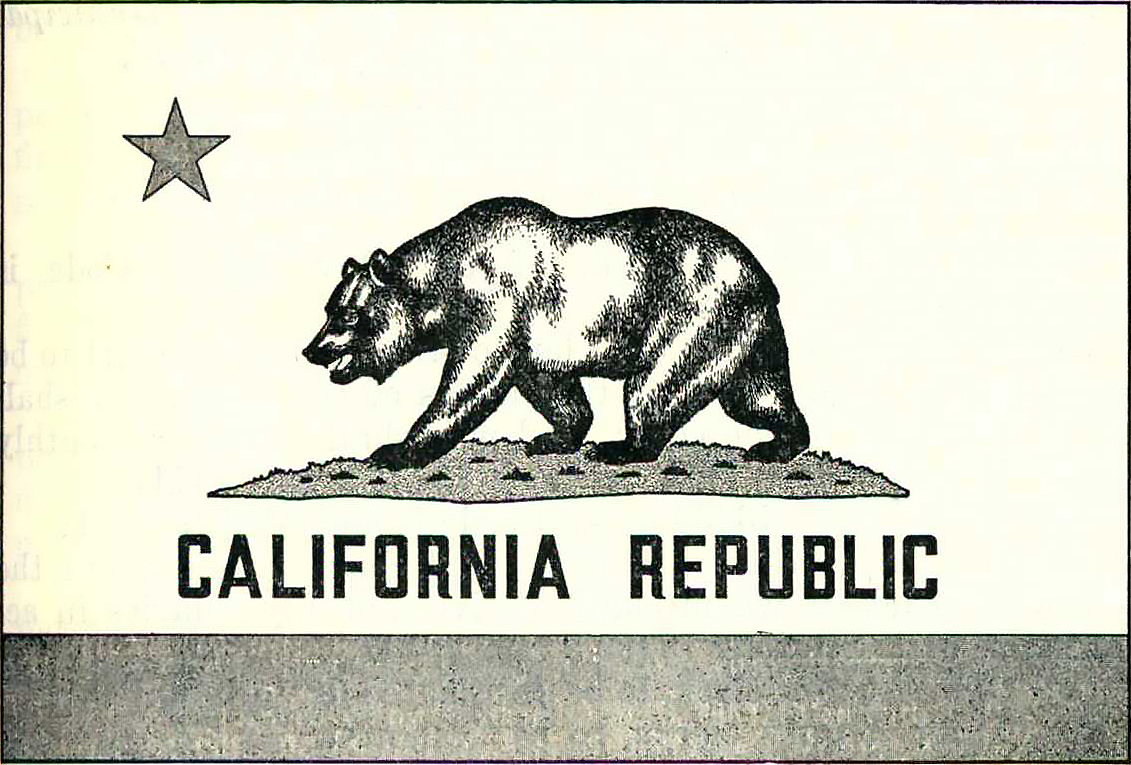California Gothic is a typeface based on the glyphs found on the California flag. The typeface is a bold condensed sans-serif, reminiscent of classic gothic or grotesque style typefaces. The font is all-caps, and covers all the Unicode Basic Latin ranges, general punctuation, and many other characters.
More information can be found at mattlag.com/californiagothic
In 1953, California standardized the state flag in law. Section 420 of the Government Code says:
The general design and the details of the Bear Flag, excluding colors,
shall correspond substantially with the following representation
 ...and includes this low res sketch of the flag itself.
...and includes this low res sketch of the flag itself.
No mention of a specific typeface to use for the iconic CALIFORNIA REPUBLIC text along the bottom of the flag.
Not even a family... or even serif / sans-serif. Just "correspond substantially". Okay.
Long story short, this project aims to reverse-engineer a typeface based on high-resolution scans of the letter forms from the original 1953 law.
Download the font files from mattlag.com/californiagothic
v2.2 is out, it is a complete re-drawing of all glyphs, and includes 446 characters from the following ranges:
- Basic Latin (U+0020 - U+007E)
- Latin Supplement (U+00A0 - U+00FF)
- Latin Extended-A (U+0100 - U+017F)
- General Punctuation (U+2000 - U+206F)
- Spacing Modifier Letters (U+02B0 - U+02FF)
- Combining Diacritical Marks (U+0300 - U+036F)
- Superscripts and Subscripts (U+2070 - U+209F)
- Currency Symbols (U+20A0 - U+20CF)
- Letterlike Symbols (U+2100 - U+214F)
- Arrows (U+2190 - U+21FF)
- Mathematical Operators (U+2200 - U+22FF)
- Arabic Presentation Forms-B (U+FE70 - U+FEFF)
- Specials (U+FFF0 - U+FFFF)
California Gothic is released under the SIL Open Font License, which you can read about in OFL.txt and OFL-FAQ.txt in this project.
This is a passion project of mine, but I also used designing this typeface to help me test scenarios for Glyphr Studio (Website - GitHub) which is another passion project of mine. All the source files are included in this repo, but it may not look like "normal" typeface design source files. So, here is an overview of the process of how this typeface was built:
- Design base glyphs in Adobe Illustrator
- Designed at full Em size (2048) Split into files for Letters and Symbols
- Copy those two files and flatten / combine all shapes
- Export each glyph as an individual SVG file
- Glyphr Studio
- Import base glyphs from SVG files
- Use the Diacritical Glyph Generator global action to make diacritics
- Flatten some of the resulting glyphs generated by the diacritical glyph generator
- Inspect each character and make sure all points are rounded to whole numbers
- Use the All Caps Font global action to copy capitals to lower-case characters
- Kern everything
- Export a SVG Font (to retain Kern information)
- Font Forge
- Edit Metadata
- Fix any validation errors
- Export a UFO font
- Finalize
- Build a TTF file from the UFO using fontmake
- Validate with Font Bakery and fix any issues with gftools and TTX
All of the files for each of these stages are available in the working-files folder.
My name is Matt LaGrandeur, and I'd be happy to answer any questions you may have.
Website: mattlag.com
Email: matt[at]mattlag[dot]com
